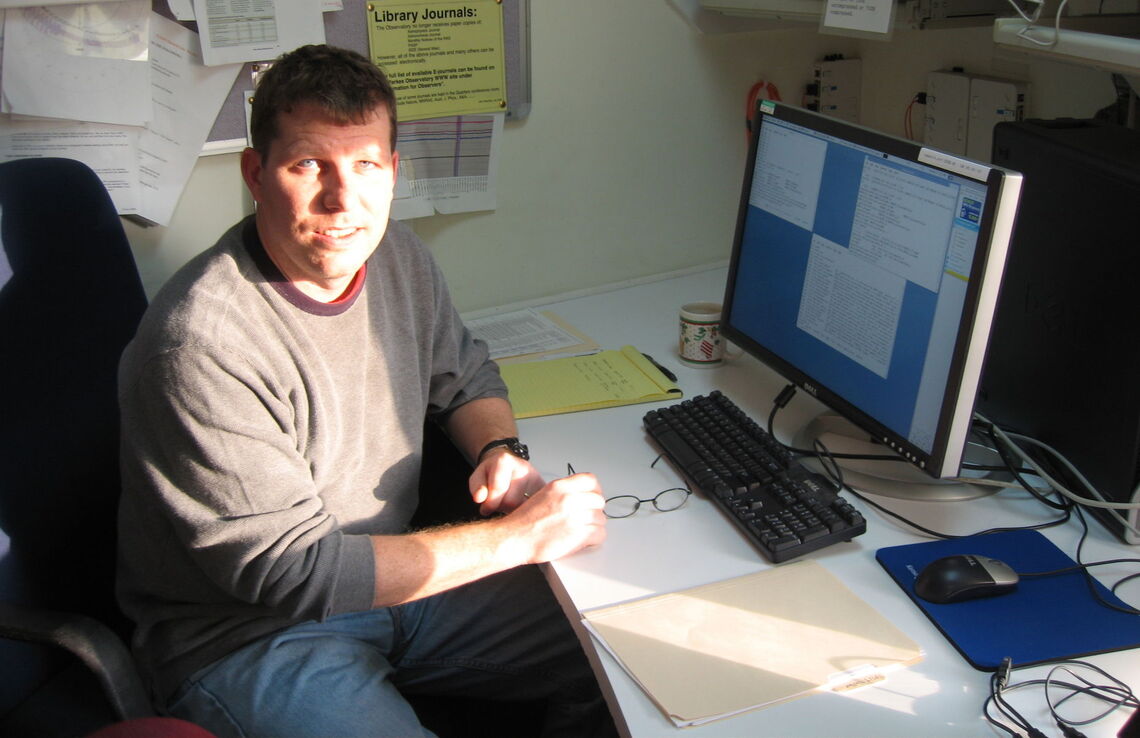F&M Stories
F&M Student STARS to Catch Gravitational Waves
Astrophysics student researchers involved in detecting gravitational waves at Franklin & Marshall College are among the beneficiaries of the National Science Foundation's renewed support of the North American Nanohertz Observatory for Gravitational Waves or NANOGrav.
The June 21 announcement is for a $17 million grant over five years to operate the NANOGrav Physics Frontiers Center (PFC). This allows the center to continue to address a transformational challenge in astrophysics: detection and characterization of low-frequency gravitational waves.
"The renewal of this NSF support for our PFC is very exciting and will lead to further research opportunities for our students at F&M," said Professor of Astronomy Fronefield Crawford, a NANOGrav senior member. "The timing is especially fortuitous since we are just now approaching the time when a gravitational wave detection by NANOGrav is possible."
According to NANOGrav, supermassive binary black holes that form with the mergers of massive galaxies are the most promising sources of low-frequency gravitational waves. Additional low-frequency gravitational-wave sources include cosmic strings, inflation, millisecond pulsars — rapidly spinning, superdense remains of massive stars that have exploded as supernovas— and other early universe events.
"The NANOGrav PFC has made significant progress over the last five years, remaining at the frontier of fundamental physics research," said Jim Shank, NSF's PFC program director. "The center now seems close to making a breakthrough discovery in gravitational waves and the way we perceive the universe."
Crawford, chair of Franklin & Marshall's Department of Physics and Astronomy and director of the College's Grundy Observatory, manages the PFC's signature multi-institution undergraduate research and education program known as the Student Teams of Astrophysics Researchers (STARS).
"Any F&M student who is interested in astrophysics is welcome to join this program, regardless of prior experience in research," Crawford said. "F&M students also will have the opportunity to work with me and with other members of the NANOGrav PFC on research projects and NANOGrav education and public outreach efforts."
The NSF funding also will help support conference travel for students to present science results, learn about pulsar and gravitational wave research, and network with other astronomers in the NANOGrav PFC, Crawford said.
Founded in 2007, NANOGrav initially consisted of 17 members in the United States and Canada, but with NSF support in the years since, NANOGrav has grown tremendously. It now has around 200 students and scientists at about 40 institutions around the world.
In the past few years, NANOGrav PFC students, postdoctoral fellows, and senior personnel have pushed the frontiers of multi-messenger astrophysics, achieved an unprecedented sensitivity to low-frequency gravitational waves, and enabled a transition into astrophysically interesting territory— NANOGrav is now poised to detect low-frequency gravitational waves and use them to study the universe in a completely new way.
Related Articles
October 30, 2024
Jake Lamb ’25: F&M Transfer ‘One of the Best Decisions I’ve Ever Made’
“Becoming a Diplomat has changed me for the better,” said Jake Lamb ‘25. Learn about his experience transferring to F&M and meet other students who made the switch.
September 13, 2024
A Day in the Life: Summer Research at F&M
“F&M’s small class size was perfect for me to engage with my teachers and make the most of my learning experience,” says junior Aayat Tahir, who spent her summer on campus as an organic chemistry research lab assistant.
August 21, 2024
Beyond the Mat: James Conway ’25 Balances Academics & Athletics
This past spring, senior James Conway became the first F&M student to earn the NCAA Elite 90 Award in any sport. Months later, the varsity wrestler is busy at work in the laboratory as a summer Hackman Scholar.

